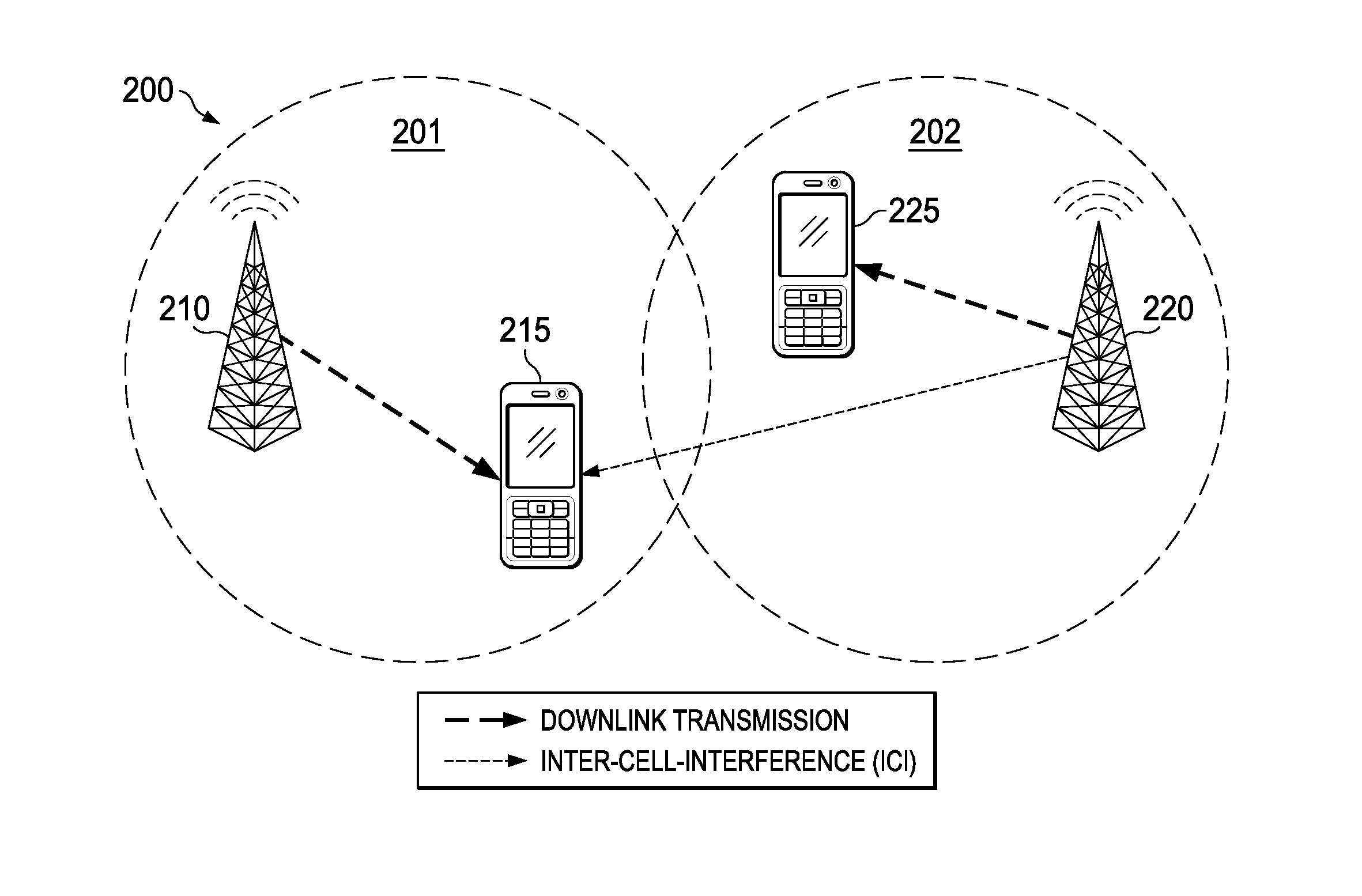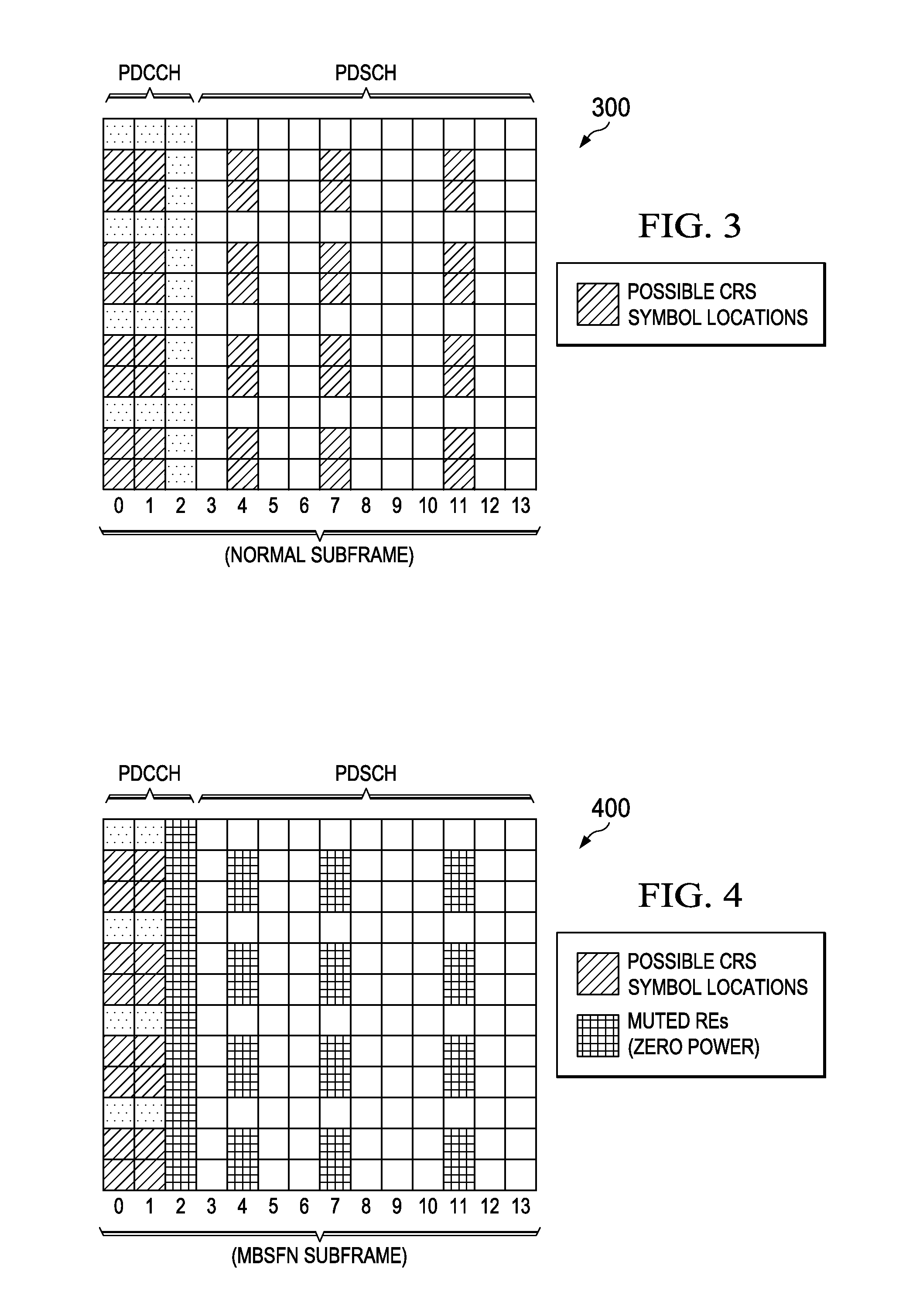System and Method for Interference Management in Cellular Networks
- Summary
- Abstract
- Description
- Claims
- Application Information
AI Technical Summary
Benefits of technology
Problems solved by technology
Method used
Image
Examples
Embodiment Construction
[0019]The making and using of the presently disclosed embodiments are discussed in detail below. It should be appreciated, however, that the present disclosure provides many applicable inventive concepts that can be embodied in a wide variety of specific contexts. The specific embodiments discussed are merely illustrative of specific ways to make and use embodiments of this disclosure, and do not limit the scope of this disclosure.
[0020]Knowledge relating to CRS symbols transmitted by neighboring cells is beneficial for served UEs receiving cooperative transmissions as well as non-cooperative transmissions. One technique for communicating CRS parameters of neighboring cell(s) to a served UE is to communicate the number of CRS antenna ports (e.g., one, two, or four) and the frequency shifts of the neighboring cell to the UE. However, this technique ignores the possibility that CRS symbols of a neighboring cell are excluded from the PDSCH region of a downlink subframe, as might be the...
PUM
 Login to View More
Login to View More Abstract
Description
Claims
Application Information
 Login to View More
Login to View More - R&D
- Intellectual Property
- Life Sciences
- Materials
- Tech Scout
- Unparalleled Data Quality
- Higher Quality Content
- 60% Fewer Hallucinations
Browse by: Latest US Patents, China's latest patents, Technical Efficacy Thesaurus, Application Domain, Technology Topic, Popular Technical Reports.
© 2025 PatSnap. All rights reserved.Legal|Privacy policy|Modern Slavery Act Transparency Statement|Sitemap|About US| Contact US: help@patsnap.com



